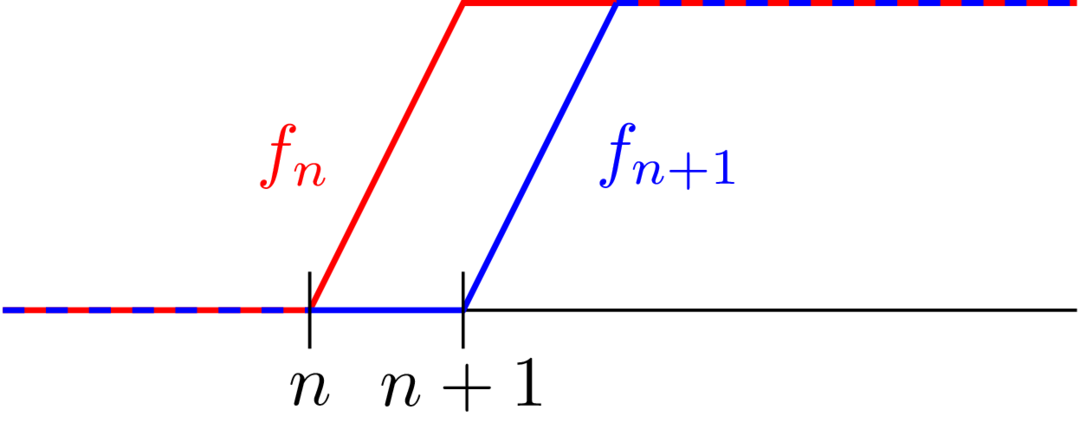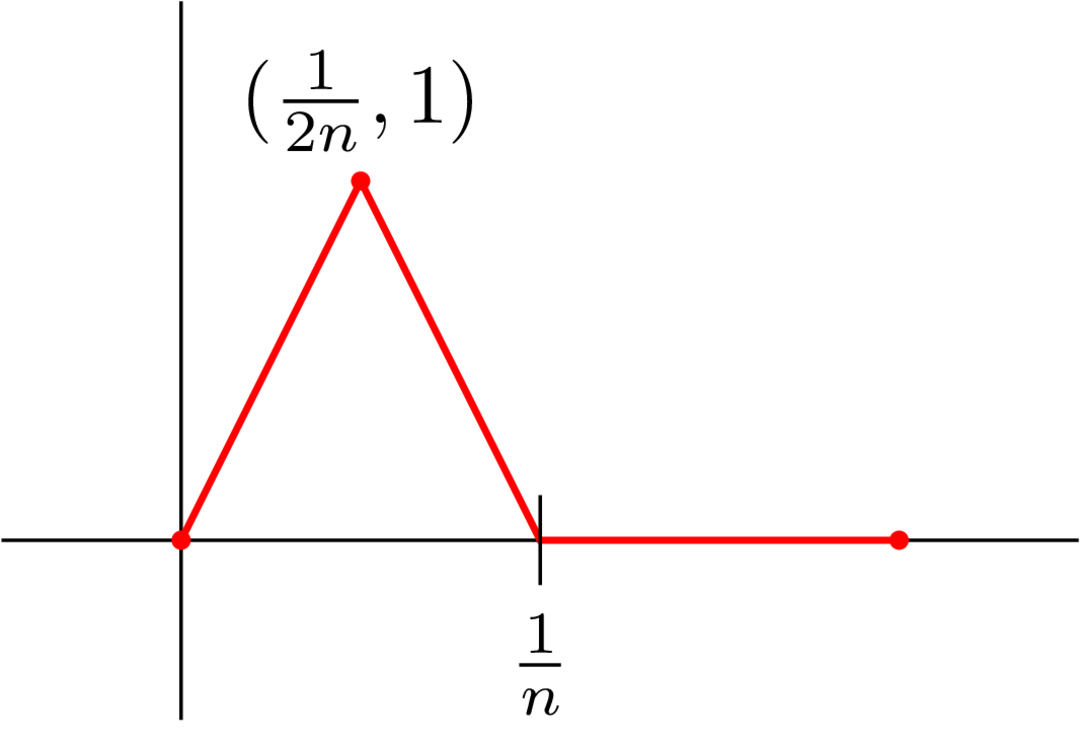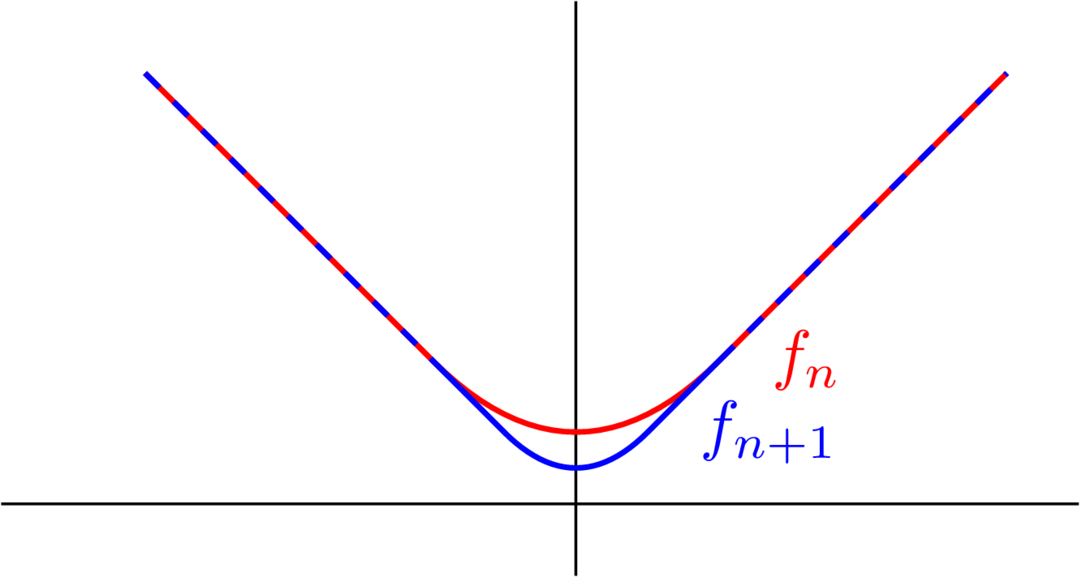Week 7 Discussion Notes
Table of Contents
Uniform Convergence
There's not too much to say about this section in the book since a lot of my examples have been related to this concept, and most of the properties about uniform convergence of functions hold for more general functions . For example, if is a sequence of continuous functions that converges uniformly to a function , then is also continuous.
A lot of the examples we did were on the space , i.e., the metric space of continuous functions on with the -metric. However, the general definitions are slightly different:
Definition
Let and be metric spaces. We define
When equipped with the -metric, i.e.,
these function spaces are metric spaces.
Remark.
The key difference here is the additional assumption that our functions are bounded. In our example , we're using , which is compact. Thus, continuous functions are automatically bounded, so we didn't need to include it in the definition.
Boundedness is important for our metric to make sense. For example, if and , then
The main result is the following theorem:
Theorem
Let be a metric space, and let be a complete metric space. Then and are complete.
Remark.
Note that it's important that is a complete metric space. In the proof, we use it to find a pointwise limit of a Cauchy (with respect to the -metric) sequence.
Dini's Theorem
In general, uniform convergence implies pointwise convergence, but the converse is not true, i.e., there are sequences which converge pointwise but not uniformly. In some very special cases, though, we can upgrade pointwise convergence to uniform convergence:
Theorem (Dini)
Let and be metric spaces, and let be functions. Assume that:
- is compact
- are continuous for all
- for all
- for all
Then uniformly.
This type of result is very rare, which I'll demonstrate by showing that in general, you can't remove any of the assumptions:
Compactness is essential:
Example 1.
Let (which is unbounded, so not compact) and let be the following function:

In words, for , for , and it's linear on . From the picture, it's clear that is continuous for all and that (the blue function always sits below the red function).
In this example, converges pointwise to . To see this, let . Then there exists such that , so if , then . Thus, , which is also continuous. However, this convergence is not uniform:
Continuity of is essential:
Example 2.
We've seen this example before: and . Then is compact, is continuous for all , and pointwise, where
However, is not continuous, and there's no chance uniformly, since that would imply that is continuous.
Monotonicity in is essential:
Example 3.
Let and let be the following function:

is compact as before, is continuous for all , and pointwise: notice that if , then for all , and if , then there exists such that . Thus, if , then also. However,
so this convergence is not uniform.
Differentiation and Uniform Convergence
Example 4.
True or false: If is a sequence of differentiable functions on and uniformly, then is differentiable.
Solution.
This is false. Let be the following function:

In words, is a straight line outside the interval , and on this interval, it's equal to a parabola (stretched accordingly) that makes differentiable on the whole interval with minimum value at the origin.
converges to pointwise, and in fact, this convergence is uniform since the maximum distance is attained at the origin. However, while is differentiable, is not differentiable at the origin.
Example 5.
True or false: If is a sequence of differentiable functions on and uniformly, then is differentiable at at least one point.
Solution.
This is also false. The Weierstrass function is the uniform limit of differentiable functions (in fact, these functions are differentiable infinitely many times), but is differentiable nowhere.
Integration and Uniform Convergence
Example 6.
True or false: If is a sequence of functions that converges uniformly to a function , then .
Solution.
This is (a little surprisingly) false. One example is , which converges uniformly to , but
which definitely doesn't converge to .
A more interesting example (i.e., one where is finite for every ) is the following:

Like the above, uniformly since the maximum distance is for any . However,
which doesn't converge to .
Example 7.
True or false: If is a sequence of functions that converges uniformly to a function , then .
Solution.
This one is true. The key difference between this situation and the previous situation is that we're now working on an interval with finite length. To prove it, let . By uniform convergence, there exists such that if , then
Thus, if ,